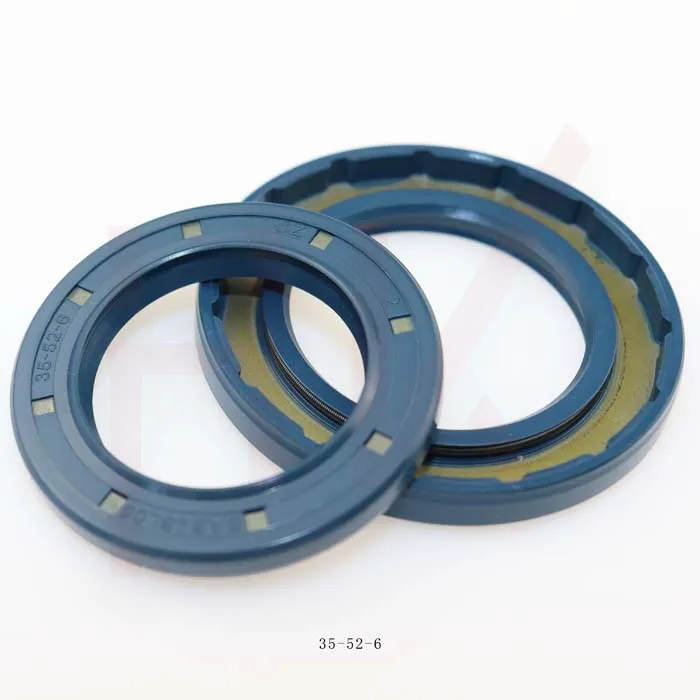Dec . 04, 2024 12:10 Back to list
Guide to Repairing Hydraulic Cylinder Seals for Optimal Performance and Longevity
Hydraulic Cylinder Seal Repair A Comprehensive Guide
Hydraulic cylinders are pivotal components in various industrial applications, including construction, manufacturing, and automotive sectors. They facilitate powerful motion and control through pressurized fluid. However, like any mechanical component, hydraulic cylinders can suffer from wear and tear over time, particularly their seals. The seals are crucial for preventing fluid leakage and maintaining the cylinder’s efficiency. When these seals fail, it’s essential to understand the repair process to ensure the longevity and functionality of the hydraulic system.
Understanding Hydraulic Cylinder Seals
Hydraulic cylinder seals are designed to withstand high pressures and harsh operating conditions. They are made from various materials, including rubber, polyurethane, and sometimes metal, depending on the specific requirements of the cylinder. Common types of seals include
1. Rod Seals Positioned between the piston rod and the cylinder bore, preventing hydraulic fluid from leaking out. 2. Piston Seals Located between the piston and the cylinder, these seals prevent fluid from bypassing the piston. 3. Buffer Seals Act as a secondary line of defense, protecting the primary seals from high-pressure surges and contaminants. 4. End Caps and Wiper Seals These components help keep dirt and debris from entering the cylinder, which can cause significant damage.
Signs of Seal Failure
Detecting seal failure early can save time and money in repairs. Common signs include
- Hydraulic Fluid Leaks Visible leakage around the cylinder indicates that the seals may be worn or damaged. - Cylinders Not Holding Pressure If the cylinder is unable to maintain pressure, there may be a breach in the seals. - Inconsistent Movement Jerky or erratic movement of the cylinder can be another indicator of seal issues. - Contaminated Fluid If the hydraulic fluid appears dirty or contains debris, this could suggest that contaminants are entering due to worn seals.
Steps for Repairing Hydraulic Cylinder Seals
When seal failure is suspected, the following steps should be taken for effective repair
1. Safety First Before beginning work on the hydraulic cylinder, ensure that the system is depressurized. This involves shutting off the hydraulic pump and, if possible, discharging the system pressure to avoid any accidents.
hydraulic cylinder seal repair

2. Disassembly Carefully disassemble the hydraulic cylinder. Start by removing any mounting brackets and other components that may obstruct access to the seals. Keep all parts organized for easier reassembly.
3. Inspect Parts Once disassembled, inspect the cylinder for wear, scratches, or damage. Check the seals and their seating areas for deterioration. If the cylinder barrel or piston shows signs of damage, it may require honing or replacing.
4. Remove Old Seals Utilize seal removal tools to carefully extract the old seals without damaging the cylinder. Be sure to remove any residual material from the seals to ensure a proper fit for the new seals.
5. Install New Seals When selecting new seals, match them to the original specifications. Apply a light coating of hydraulic fluid to the seals before installation to facilitate an easier fit. Use proper tools to seat the seals in place without rolling or twisting them.
6. Reassemble the Cylinder Carefully reassemble the cylinder, ensuring that all components are aligned and tightened according to the manufacturer’s specifications.
7. Testing Once reassembled, gradually reintroduce pressure to the system and check for leaks. Monitor the cylinder’s operation to confirm that the seals are functioning correctly.
Preventive Maintenance
After repairing hydraulic cylinder seals, it's essential to implement preventive maintenance practices to prolong their lifespan. Regularly inspect hydraulic fluid levels, replace the fluid as needed, and ensure that the system is free of contaminants. Additionally, establishing a routine filter replacement schedule can help maintain fluid cleanliness and enhance seal durability.
Conclusion
Hydraulic cylinder seal repair is a critical process that can significantly impact the efficiency and performance of hydraulic systems. By understanding the signs of seal failure, following a careful repair process, and implementing preventive measures, operators can ensure that their hydraulic systems remain in top working condition for years to come. Proper knowledge and timely maintenance are key to avoiding costly downtime associated with hydraulic seal failures.
-
The Trans-formative Journey of Wheel Hub Oil Seals
NewsJun.06,2025
-
Graphene-Enhanced Oil Seals: Revolutionizing High-Pressure Oil Sealing
NewsJun.06,2025
-
Future of Hydraulic Sealing: Advanced Intelligent TCN Oil Seals
NewsJun.06,2025
-
Don’t Let a Broken TCV Oil Seal Ruin Your Day
NewsJun.06,2025
-
Bio-Inspired Dust Seals for Better Sealing Performance
NewsJun.06,2025
-
Biodegradable and Sustainable Hydraulic Seal Materials
NewsJun.06,2025
-
Top Oil Seal Solutions for Your Industrial Needs
NewsMay.22,2025
Products categories
















